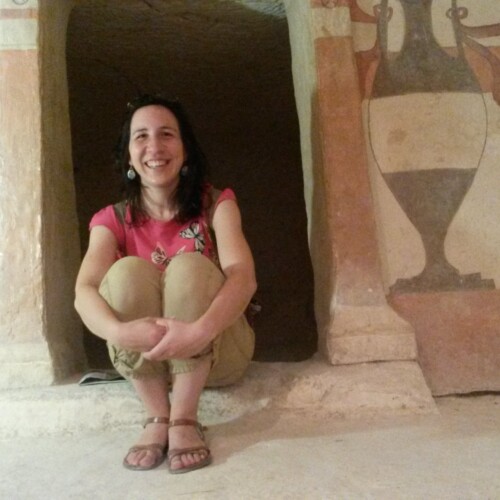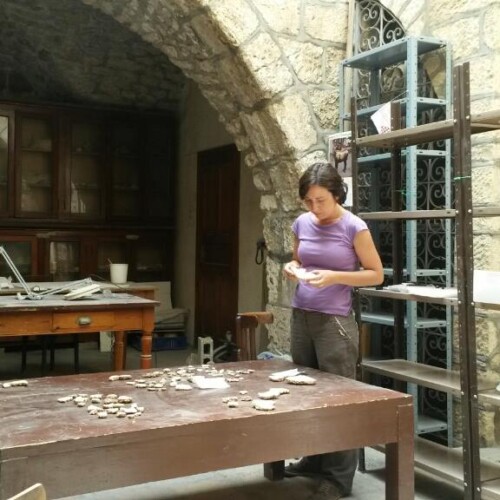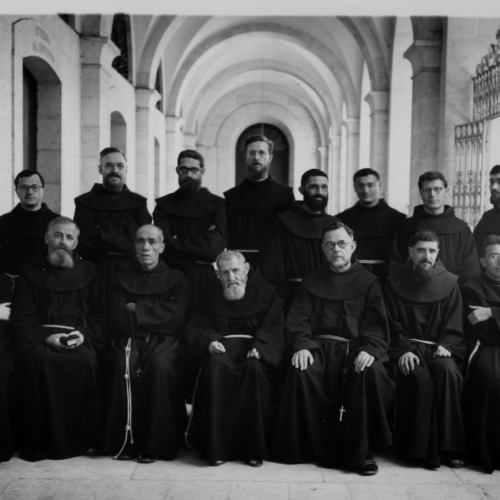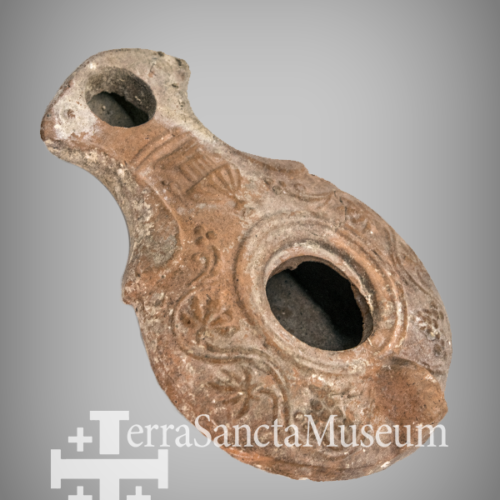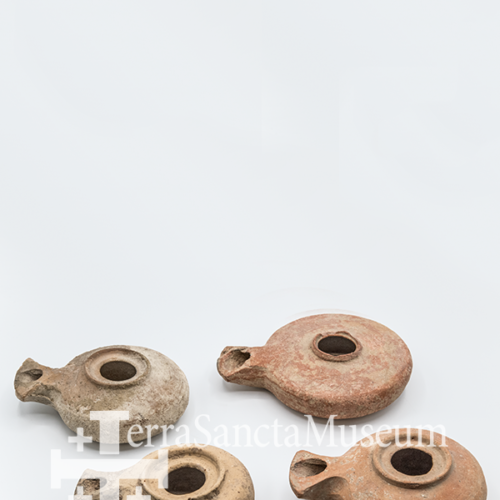Visiting the Terra Sancta Museum to recognize yourself in the story of the Revelation: the archaeological collections of the Studium Biblicum Franciscanum
Daniela Massara is the curator of the archaeological collections of the Terra Sancta Museum. Her first encounter with the Holy Land came about unexpectedly, when she was writing her thesis in Classics, on the Constantinian ruins of the Basilica of the Holy Cross in Jerusalem, which is in Rome. But this was only the beginning of her story with the Holy Land…
How is your story interwoven with that of the Holy Land?
Ever since I was a student at Milan University, I had asked myself: “How can my work as an archaeologist be an opportunity to deepen my Christian roots and my faith, which I have inherited from my family?” So, after my Master’s degree in Archaeology, I looked for an internship in the Holy Land to try and further answer this question and it was here that I met the Custody. I took my first steps in cataloguing the finds of the archaeological collections of the Studium Biblicum Franciscanum, the centre for Biblical research and studies of the Franciscans of the Holy Land, where I am now also involved in the teaching. I found a completely new world here, all to be discovered: the Biblical earth requires the knowledge of very many specific sources and a methodology of approach to discoveries which differs from the ways I was used to.
Here you also met the archaeologists of the Studium Biblicum Franciscanum…
Yes, in the Holy Land I have also met great masters, the archaeologists of the Studium Biblicum, who are references for archaeology, Biblical and otherwise. Father Sylvester Saller has documented his excavations in an exceptional way with the camera. Father Stanislao Loffreda trained at the Oriental Institute of Chicago, together with archaeologists of the calibre of Giorgio Buccellati and his wife, Marilyn Kelly. His avant-garde method underlies the discoveries and studies on the excavations of Capernaum. Today there is Father Eugenio Alliata, an established archaeologist and director of the collections. I am rediscovering the importance of having a mentor, like him, to watch and to learn from. I am always amazed by his curious gaze on things and his humility, as though to say: reality is given to me, it is not mine as a right but it is mine because it has been given to me and entrusted to me.
The Holy Land is a place that is impregnated with religiousness and this can become an obstacle in study, because archaeology can be exploited. For the Franciscan scholars however, faith is not an impediment to the search for truth, but a magnifying lens that brings it nearer and makes us love the object of study even more.
What is the value of the archaeological collections of the Studium Biblicum Franciscanum and why is it worth visiting the Terra Sancta Museum?
The collections of the Studium Biblicum have a very great historical and archaeological value.
The studies, the excavations and the objects found by the Franciscans have allowed significantly increasing knowledge about the Holy Land. For example, for materials, for pottery in particular, such as the finds in the excavations of Capernaum, where a great deal of terra sigillata has been found, a unique case in the Holy Land. Many Israeli archaeologists come to study these finds with us because we have so many, to learn to recognize the various types of materials. Another example are the studies by Father Loffreda on the oil lamps of the Byzantine era – of which we are going to display many examples in the museum – which are still an essential point of departure for the scholars of archaeology of the period.
In addition, the collections of the Studium Biblicum are also made up of groups of finds collected from individual institutions or people, such as the donation of Egyptian objects by Father Cleophas Steinhausen.
The values does not lie only in the rarity of the collections. One of the reasons that made me come here is where the finds come from, the Holy Places. The object becomes an important source for my faith and it can be the same for the faith of millions of people all over the world. My cataloguing began with some objects from Capernaum from the house of Peter, belonging to the strata of Jesus’ time! Perhaps it was not the actual pot that I was studying that was the one Peter’s mother-in-law had used to make lunch, but it was like it and had been made the same way. Thanks to study, a bond of empathy and identification has been created with a story of over a thousand years that has reached down to me and has changed my life.
Visiting the museum means taking this opportunity to broaden your horizons and opening up your heart and recognizing yourself in a great story, that is the story of the Revelation. And finding out that you are proud to belong to it.
What would you say to young students who are beginning their archaeology studies now?
I would tell them: if you discover in yourself a sincere question, even though everyone tells you that it is not worth examining more deeply, seek out the company of those believe your question is important, not those who quash it, and check it out!

